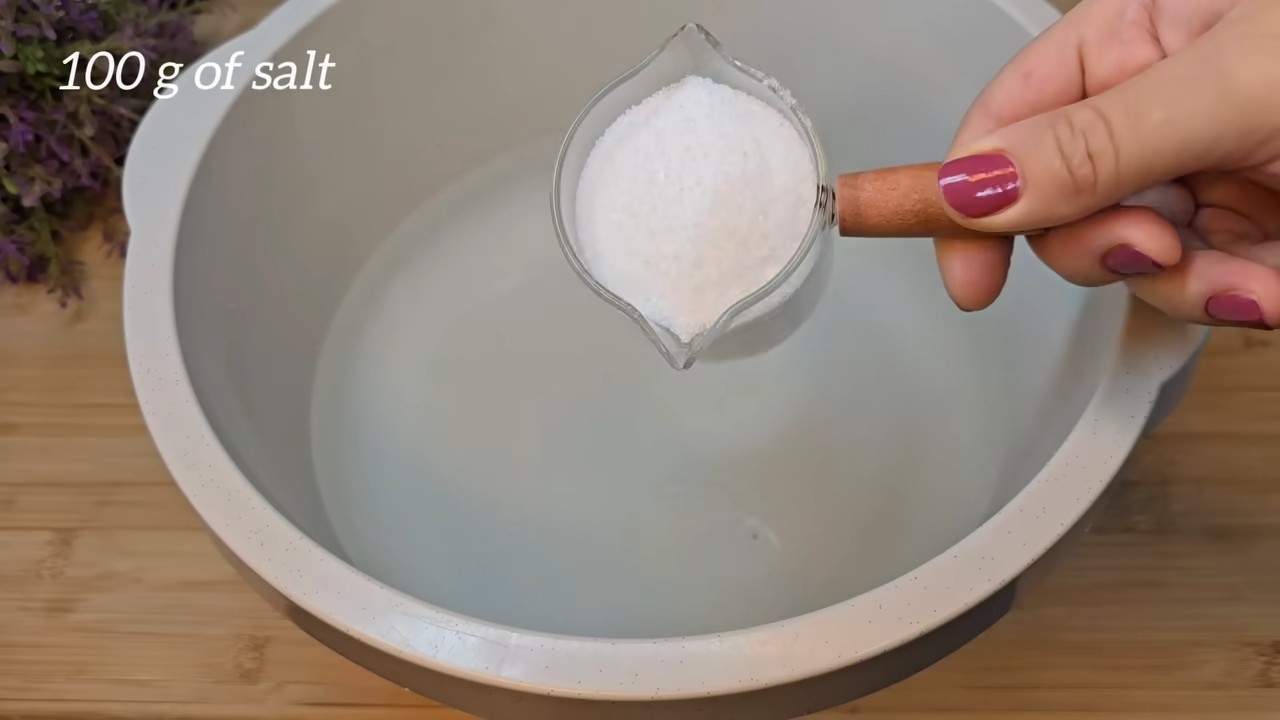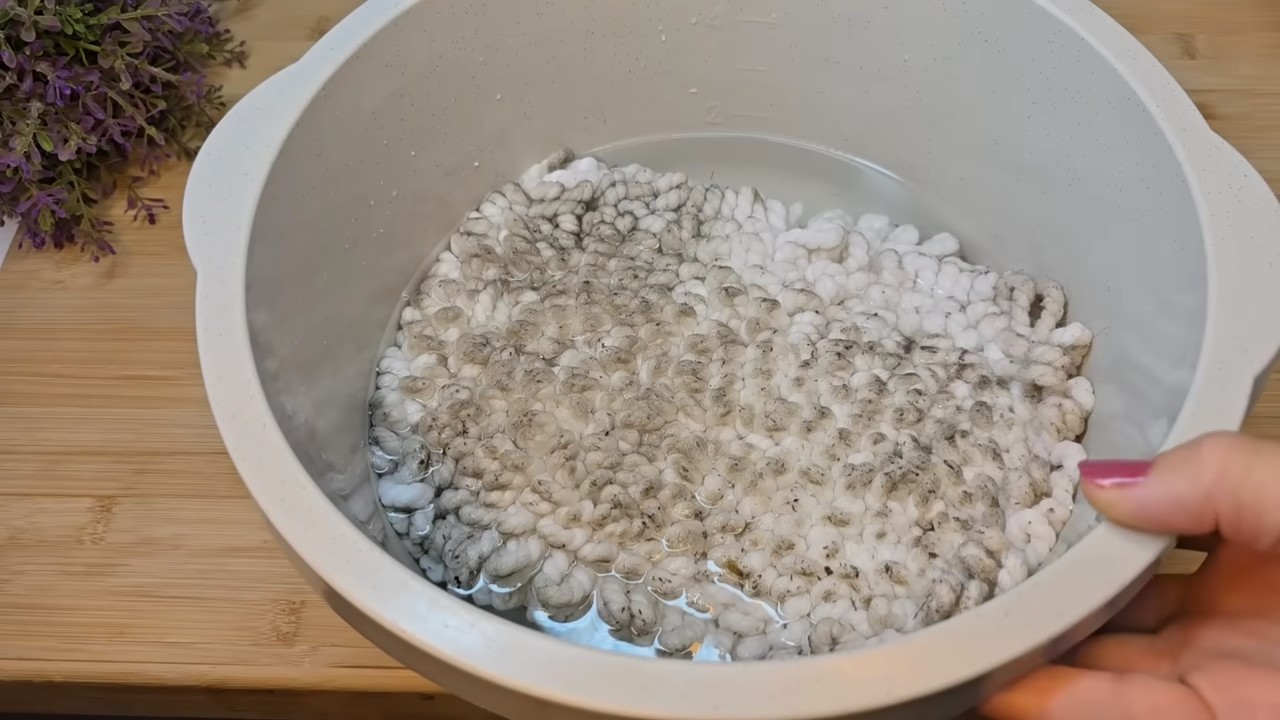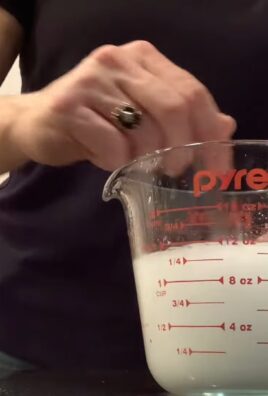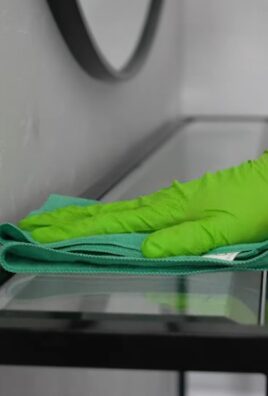Salt cleaning hacks – who knew something so simple could be so powerful around the house? I’m always on the lookout for easy, affordable ways to keep my home sparkling, and let me tell you, salt has become my new secret weapon. Forget those expensive, chemical-laden cleaners; we’re going back to basics with a natural, effective solution that’s been used for centuries!
Salt’s cleaning prowess isn’t exactly a new discovery. Think back to ancient times – before fancy detergents, people relied on readily available resources like salt to scrub, disinfect, and preserve. From the Egyptians using it for mummification to sailors using it to prevent spoilage on long voyages, salt has a rich history of practical application. Now, we’re rediscovering its magic for modern-day cleaning!
But why should you bother with salt cleaning hacks in today’s world of endless cleaning products? Well, for starters, it’s incredibly budget-friendly. Plus, it’s a fantastic eco-friendly alternative to harsh chemicals that can be harmful to your family and the environment. I’ve found that using salt not only saves me money but also gives me peace of mind knowing I’m cleaning my home with a natural, non-toxic substance. In this article, I’m going to share some of my favorite DIY salt cleaning tricks that will leave your home sparkling and fresh, without breaking the bank or compromising your health. Get ready to be amazed by the cleaning power of this humble ingredient!

DIY Salt Cleaning Hacks: Unleash the Power of Sodium Chloride!
Hey there, fellow DIY enthusiasts! I’m always on the lookout for simple, effective, and budget-friendly cleaning solutions. And guess what? Common table salt, that humble kitchen staple, is a cleaning powerhouse! Forget expensive specialty cleaners; salt can tackle a surprising number of household messes. Let’s dive into some amazing salt cleaning hacks that will save you money and keep your home sparkling.
Tackling Tough Stains with Salt
Salt’s abrasive texture and chemical properties make it a fantastic stain remover. Here’s how to use it:
Removing Red Wine Stains
Oh no! Red wine spilled on your favorite rug? Don’t panic! Salt is your best friend here.
1. Act Fast! The key to removing red wine stains is to act quickly. The longer the wine sits, the harder it will be to remove.
2. Blot, Don’t Rub: Immediately blot up as much of the spilled wine as possible with a clean cloth or paper towel. Rubbing will only spread the stain.
3. Generously Cover with Salt: Completely cover the stain with a thick layer of salt. The salt will absorb the remaining wine.
4. Wait Patiently: Let the salt sit on the stain for several hours, or even overnight. You’ll notice the salt turning pink as it absorbs the wine.
5. Vacuum Thoroughly: Once the salt has dried and absorbed the wine, vacuum it up thoroughly.
6. Inspect and Repeat: If the stain is still visible, repeat the process. For stubborn stains, you can mix the salt with a little water to form a paste and apply it to the stain before covering it with dry salt.
Cleaning Scorched Pots and Pans
Burnt food stuck to the bottom of your pot? Salt to the rescue!
1. Cool Down: Let the pot or pan cool down completely before attempting to clean it.
2. Add Salt and Water: Pour a generous amount of salt into the pot or pan, enough to cover the burnt area. Add enough water to form a thick paste.
3. Let it Soak: Let the salt and water mixture soak for several hours, or even overnight for really stubborn burns.
4. Scrub Gently: Use a non-abrasive sponge or scrubber to gently scrub the burnt food. The salt will help to loosen the burnt residue.
5. Rinse and Repeat: Rinse the pot or pan thoroughly with water. If any burnt food remains, repeat the process. For extra cleaning power, you can add a little baking soda to the salt and water mixture.
Removing Rust
Rust can be unsightly and damaging. Salt, combined with lemon juice or vinegar, can help remove it.
1. Prepare the Paste: Mix salt with lemon juice or white vinegar to form a thick paste. The ratio should be about 1:1.
2. Apply to Rust: Apply the paste generously to the rusted area.
3. Let it Sit: Allow the paste to sit on the rust for several hours, or even overnight. The acid in the lemon juice or vinegar will help to break down the rust.
4. Scrub Vigorously: Use a scrub brush or steel wool to scrub the rusted area. The salt will act as an abrasive to help remove the rust.
5. Rinse and Dry: Rinse the area thoroughly with water and dry it completely. To prevent future rust, you can apply a protective coating, such as paint or oil.
Freshening and Deodorizing with Salt
Salt isn’t just for stain removal; it can also freshen and deodorize your home.
Deodorizing Cutting Boards
Cutting boards can absorb odors from food, especially garlic and onions. Salt can help to neutralize these odors.
1. Sprinkle with Salt: Sprinkle the cutting board generously with salt.
2. Rub with Lemon: Cut a lemon in half and use it to rub the salt into the cutting board. The lemon juice will help to disinfect and deodorize the board.
3. Let it Sit: Let the salt and lemon juice sit on the cutting board for about 15-20 minutes.
4. Rinse and Dry: Rinse the cutting board thoroughly with water and dry it completely.
Freshening Sponges
Sponges can quickly become smelly and harbor bacteria. Salt can help to freshen them up.
1. Prepare Salt Solution: Dissolve 1/4 cup of salt in 1 cup of warm water.
2. Soak the Sponge: Soak the sponge in the salt solution for several hours, or overnight.
3. Rinse and Squeeze: Rinse the sponge thoroughly with water and squeeze out any excess water.
Cleaning Drains
A clogged or smelly drain? Salt can help!
1. Pour Salt Down Drain: Pour about 1/2 cup of salt down the drain.
2. Follow with Hot Water: Follow the salt with a pot of boiling water.
3. Let it Sit: Let the mixture sit in the drain for several hours, or overnight.
4. Flush with Hot Water: Flush the drain with hot water to clear any remaining debris. This method works best for minor clogs and to prevent future clogs. For more severe clogs, you may need to use a drain snake or call a plumber.
Cleaning Delicate Items with Salt
Believe it or not, salt can even be used to clean delicate items!
Cleaning Brass and Copper
Salt, combined with vinegar or lemon juice, can help to restore the shine to brass and copper items.
1. Prepare the Paste: Mix equal parts salt, vinegar (white vinegar or apple cider vinegar work well), and flour to form a paste. You can also use lemon juice instead of vinegar.
2. Apply to Metal: Apply the paste to the brass or copper item.
3. Let it Sit: Let the paste sit on the metal for about 15-30 minutes.
4. Rinse and Polish: Rinse the item thoroughly with warm water and polish it with a soft cloth.
Cleaning Artificial Flowers
Dusty artificial flowers? Salt can help to remove the dust without damaging the delicate petals.
1. Place Flowers in Bag: Place the artificial flowers in a large paper bag or plastic bag.
2. Add Salt: Add about 1/2 cup of salt to the bag.
3. Shake Gently: Gently shake the bag for a few minutes. The salt will act as an abrasive to remove the dust.
4. Remove Flowers: Remove the flowers from the bag and shake off any excess salt.
Salt as a General Cleaning Booster
Salt can also be added to your regular cleaning routine to boost its effectiveness.
Cleaning Windows and Mirrors
Add a tablespoon of salt to your window cleaning solution for extra sparkle.
1. Prepare Cleaning Solution: Mix equal parts white vinegar and water in a spray bottle. Add a tablespoon of salt.
2. Spray and Wipe: Spray the solution onto the windows or mirrors and wipe clean with a microfiber cloth.
Cleaning Your Iron
A dirty iron can leave marks on your clothes. Salt can help to clean the soleplate of your iron.
1. Protect Your Surface: Place a clean cotton cloth or ironing board cover on your ironing board.
2. Sprinkle with Salt: Sprinkle a generous amount of salt onto the cloth.
3. Heat Iron on High: Heat your iron to the highest setting, making sure the steam function is turned off.
4. Iron the Salt: Iron the salt-covered cloth for a few minutes, using a circular motion. The salt will help to remove any residue from the soleplate of the iron.
5. Wipe Clean: Unplug the iron and let it cool completely. Once cool, wipe the soleplate with a clean, damp cloth.
Preventing Mold and Mildew
Salt can help prevent mold and mildew growth in damp areas, such as bathrooms.
1. Create a Salt Solution: Dissolve a generous amount of salt in water.
2. Spray on Surfaces: Spray the solution on shower walls, tiles, and other areas prone to mold and mildew.
3. Let it Dry: Let the solution dry on the surfaces. Repeat regularly to prevent mold and mildew growth.
So there you have it! A whole arsenal of cleaning hacks using just plain old salt. I hope these tips help you keep your home clean and fresh without breaking the bank. Happy cleaning!

Conclusion
So, there you have it! This simple yet incredibly effective salt cleaning hack is a game-changer for anyone looking to simplify their cleaning routine and achieve sparkling results without harsh chemicals. We’ve explored how the abrasive nature of salt, combined with its natural disinfecting properties, makes it a powerful ally in tackling everything from stubborn stovetop stains to grimy grout.
Why is this a must-try? Because it’s economical, eco-friendly, and surprisingly versatile. Forget expensive specialty cleaners filled with questionable ingredients. With just a humble box of salt, you can unlock a world of cleaning possibilities. Think about the satisfaction of removing burnt-on food from your cast iron skillet with just salt and a bit of elbow grease, or the relief of seeing your dingy bathroom tiles transformed with a simple salt paste. The possibilities are truly endless.
But don’t just take our word for it. We encourage you to experiment and discover the magic of salt cleaning for yourself.
Variations and Suggestions
* Scented Salt Scrub: For an extra boost of freshness, add a few drops of your favorite essential oil to your salt cleaning mixture. Lemon, lavender, and tea tree oil are all excellent choices for their cleaning and aromatic properties.
* Salt and Vinegar Power: Combine salt with white vinegar for a potent cleaning solution that tackles tough stains and mineral deposits. This combination is particularly effective for cleaning showerheads and faucets.
* Salt and Baking Soda Boost: For extra scrubbing power, mix salt with baking soda. This combination is great for cleaning ovens and removing stubborn grime from kitchen surfaces.
* Coarse vs. Fine Salt: Keep both coarse and fine salt on hand. Coarse salt is ideal for scrubbing tough stains, while fine salt is gentler on delicate surfaces.
* Precaution: Always test any cleaning solution on an inconspicuous area first to ensure it doesn’t damage the surface.
We’re confident that once you experience the cleaning power of salt, you’ll be hooked. It’s a simple, sustainable, and satisfying way to keep your home clean and fresh.
Now, it’s your turn! Give these salt cleaning hacks a try and share your experiences with us. What did you clean? What variations did you try? What were your results? We’re eager to hear your stories and learn from your successes. Let’s build a community of salt cleaning enthusiasts and discover even more ways to harness the power of this amazing natural resource. Share your tips and tricks in the comments below!
Frequently Asked Questions (FAQ)
Q: Is salt cleaning safe for all surfaces?
A: While salt is a versatile cleaner, it’s not suitable for all surfaces. Avoid using salt on delicate or easily scratched materials like polished wood, certain types of plastic, and some painted surfaces. Always test a small, inconspicuous area first to ensure it doesn’t cause damage. For example, while salt is great for cast iron, it’s not recommended for non-stick cookware as it can scratch the coating.
Q: What kind of salt should I use for cleaning?
A: The type of salt you use depends on the cleaning task. Coarse salt, like sea salt or kosher salt, is excellent for scrubbing tough stains and removing grime from durable surfaces like cast iron skillets, oven racks, and bathroom tiles. Fine salt, like table salt, is gentler and better suited for cleaning more delicate surfaces or for making pastes and solutions. Epsom salt can also be used for cleaning, particularly for removing soap scum and mineral deposits.
Q: Can I use salt to clean my stainless steel appliances?
A: Yes, salt can be used to clean stainless steel, but with caution. Use fine salt and a soft cloth to avoid scratching the surface. Mix the salt with a small amount of water to create a paste, apply it to the stainless steel, and gently rub in the direction of the grain. Rinse thoroughly with water and dry with a clean cloth. Avoid using coarse salt or abrasive scrubbers, as they can damage the finish.
Q: How do I clean a burnt pot with salt?
A: Cleaning a burnt pot with salt is a simple and effective method. First, remove as much of the burnt food as possible. Then, pour a generous amount of salt into the pot, covering the burnt areas. Add just enough water to moisten the salt. Let the mixture sit for several hours or overnight. The salt will help to loosen the burnt food, making it easier to scrub away. After soaking, use a non-abrasive sponge or scrubber to remove the remaining residue. Rinse thoroughly with water.
Q: Can salt be used to clean grout?
A: Yes, salt is an excellent natural cleaner for grout. To clean grout with salt, mix salt with water to create a thick paste. Apply the paste to the grout lines and let it sit for about 15-20 minutes. Then, use a stiff-bristled brush or an old toothbrush to scrub the grout. Rinse thoroughly with water. For stubborn stains, you can mix salt with baking soda and a little bit of water to create a more powerful cleaning paste.
Q: Is salt cleaning environmentally friendly?
A: Yes, salt cleaning is a very environmentally friendly option. Salt is a natural and readily available resource. It’s biodegradable and doesn’t contain any harsh chemicals or toxins that can harm the environment. By using salt for cleaning, you can reduce your reliance on commercial cleaning products that often contain harmful ingredients and contribute to pollution.
Q: Can I use salt to unclog a drain?
A: While salt isn’t the most powerful drain cleaner, it can be used as a preventative measure or for minor clogs. Pour a cup of salt down the drain, followed by a cup of boiling water. Let it sit for about 20-30 minutes, then flush with more hot water. The salt helps to break down grease and debris, which can help to keep your drains clear. For more severe clogs, you may need to use a stronger drain cleaner or call a plumber.
Q: How can I make a scented salt scrub for cleaning?
A: Making a scented salt scrub is easy and adds a pleasant aroma to your cleaning routine. Simply mix salt with a carrier oil, such as olive oil, coconut oil, or almond oil, to create a paste. Then, add a few drops of your favorite essential oil. Lemon, lavender, tea tree, and eucalyptus are all excellent choices for their cleaning and aromatic properties. Store the scrub in an airtight container and use it to clean surfaces like sinks, bathtubs, and countertops.
Q: What are the benefits of using salt as a cleaning agent?
A: The benefits of using salt as a cleaning agent are numerous. It’s economical, readily available, environmentally friendly, and effective at cleaning a variety of surfaces. Salt is a natural abrasive, which helps to scrub away dirt and grime. It also has disinfecting properties, which can help to kill bacteria and germs. Additionally, salt is non-toxic and doesn’t contain any harsh chemicals, making it a safer alternative to commercial cleaning products.
Q: Where can I find more information about salt cleaning hacks?
A: You can find more information about salt cleaning hacks online through various websites, blogs, and social media platforms. Search for “salt cleaning hacks,” “natural cleaning with salt,” or “DIY salt cleaning solutions” to find a wealth of information and tips. You can also find videos and tutorials that demonstrate different salt cleaning techniques. Remember to always research and verify the information before trying any new cleaning method.





Leave a Comment